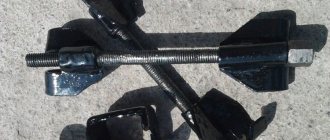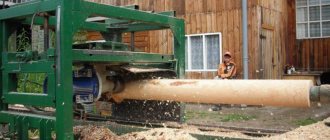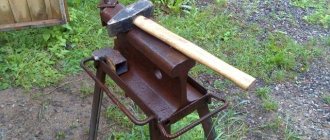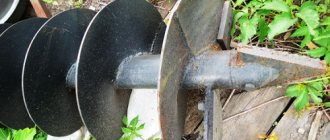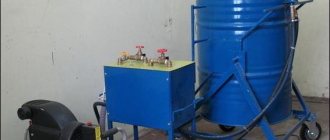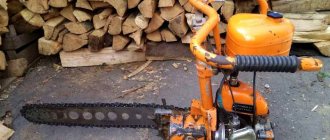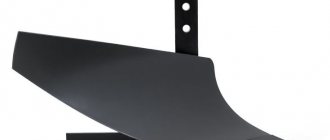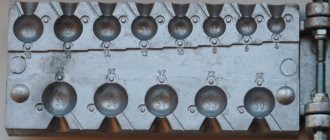When repairing or adjusting a car's suspension, it becomes necessary to fix the spring in a certain position.
Various tool concepts:
- Passive: Represents two brackets connected to each other either rigidly or using a threaded rod.
Simply secures the spring, compressed using the weight of the vehicle. After lifting the body with a jack, the elastic element remains in a compressed state. - Active: The compression mechanism can operate under load when the shock absorber is under operating tension. The position of the body relative to the ground does not matter.
Let's consider the second option in more detail.
How does a spring remover work, and what types are they?
What is a puller used for? It overcomes the straightening force of the springs. The applied force on the puller brackets is commensurate with the weight of the car, but this does not mean that its design is too expensive and high-tech.
There are many options, but they are divided into only two types: mechanical and hydraulic drive.
Mechanical spring remover
Most often it has a threaded drive mechanism. With a sufficient diameter of the pin (providing a good gear ratio on the thread), and a long handle of the key, you can compress the springs manually without excessive effort.
The technology is as follows: two pullers are symmetrically put on the rack. By turning the threaded rod, you bring the claws to the middle of the spring directly on the shock absorber, compressing it to the required size.
Pullers placed on both sides ensure uniform compression. When working with the suspension of trucks or heavy SUVs, experienced craftsmen install 3 or even 4 pullers.
Semi-permanent racks
Service stations often use semi-permanent struts to remove springs from shock absorber struts. The tool is quite universal and fits most pendants. Thanks to the drive mechanism gearbox, working with it is convenient and safe.
The only drawback is that it is not always possible to compress the spring directly on the car. After all, this is a bench device: the puller works with the suspension removed from the car.
Lever type
Lever type pullers have a similar “problem”. The mechanism is reliable and safe, but its dimensions do not allow it to fit into the space under the wing of the car.
Hydraulic puller
Of course, there are pullers with compressors, electric drives, and other devices that make life easier when servicing a car. This is all good until you see the price tag.
Sometimes it is more profitable to visit a car service center several times than to purchase an industrial puller for personal use. Which exit? Make your own instrument.
Making spring ties from an old jack
Today I removed the strut, it needs to be repaired, but we are not talking about repairing the strut, but about tightening the spring. I’ve seen a lot of different options, everyone makes a VAZ jack from the original one, in my opinion, but I don’t have one, but I have a jack from the Volga GAZ 21, now I’ll try to make a puller out of it. I also needed a couple of corner pieces, a connecting rod from the same Volga, and welding and a grinder.
In principle, what is there to try, I will do it now, for this you need a jack, a connecting rod from a Volga car.
I will continue to do and show what and how...
This is what happened: the connecting rod was welded down,
and on top of this ring I had cut off from a gas cylinder,
this is the ring. Here she is, these are the rings
I have one, I make various products from a gas cylinder and I used it to make a puller.
These are the two segments (I’m not going to the exhibition))) don’t pay too much attention to the appearance.
This is how the puller turned out, now I’ll cultivate it, clean it and spray it a little from a spray can to make it better and show how it works.
Now it will dry out a little because I spray painted it and will try to remove the springs.
This is how the puller for springs from the struts turned out to be so easy to make; it took about 30 minutes to make, which means it was quick to make.
I had to redo the design a little, because the ring that I had prepared at the top was good to disassemble, but assembling it and getting into the shock absorber cushion is difficult, so I had to do it like this.
I didn’t come up with this myself, I spied it and changed it. This is how we compress the spring itself without a cup and structure that stands on top of the shock absorber.
It turned out to be an excellent design, which was tested and proved to be excellent))) Bye everyone.
Author; Alexey Avramenko Cherkassy, Ukraine
Manufacturing a shock absorber spring remover
Many car enthusiasts use a regular chain: they wind a few turns around the coils of the spring and tighten the chain. After lifting the car with a jack, the shock absorber strut is stretched, but the spring remains compressed. This is a dangerous method: if the chain slips, the spring may spring back and cause serious injury.
How to make a simple puller similar to an industrial one
A mechanical semi-stationary “machine” can be created from a “Volgovsky” jack.
- old jack from Volga-24, Moskvich 412 or other Soviet passenger car = 0 rub.
- old connecting rod from any engine = 0 rub.
- steel corner from a landfill 1 meter = 0 rub.
- a pair of rods from broken shock absorbers = 0 rub.
- a handful of bolts and nuts M12 - M14 = conditionally free.
Communities › Garage Equipment and Tools › Blog › DIY spring ties
Hi all. I'm twisting the suspension in places. And you have to change the springs, but this is a rather unsafe task, it can fly into your head and leave you without a finger. But it needs to be done)). And in order to make my work easier, I decided to sculpt a machine for compressing and releasing springs from a Volgov jack (I spotted it on the internet). But after half a day of welding, I realized that mostly in YouTube they compress small springs, which I can easily compress with ordinary ties. Yes, and the plates must be even, otherwise everything will compress awry, and to add to this, my jack was already rickety and did not want to work as expected. What do I mean by all this? And to the fact that after I went PSYCHANIC, I cut up the entire halabuda, and made excellent couplers from the screws of the worthless jacks that would not let me down. And I also rebuilt the factory ones and now they are quite reliable and convenient. What actually happened: Here is a tie from an old non-working jack for Renault 19. The jack is bent, but the screw is reliable. But I made one very necessary upgrade to this device. I added a support bearing to it (the red one in the photo) that was in the jack. That is, if earlier (tested) when you twist the nut, it could bite due to friction, the tie could be pulled to the side and it would naturally fly off, THEN now the support bearing will not allow this to happen, everything will spin like clockwork and the tie will stand dead. The grips are made from a thick chain link, they will never straighten out)))
This is interesting: Selection of Denso iridium spark plugs by car
But what you see in the photo above are seeds compared to this monster. The rod is from a Volgov jack and can withstand two tons. Also with a prop. It works flawlessly, and most importantly, you can compress very large springs, like Mercedes ones - you just need to cut down one more of these for a couple and you will be completely happy.
Well, I modified and strengthened the factory ones (two-legged), with which I had previously worked, and made one-legged ones. Now it copes with the task quite reliably, and does not tend to jump out every time at the slightest misalignment.
All the ties have 24 mm nuts welded on them. I work with a wrench, quickly - and now it’s also relatively safe. These ties have already compressed the two front springs on the Ford Mondeo - without strain.
I haven’t given up on the idea of making a full-fledged stand for compressing springs, I’ll definitely do it, but a little later, when I have free time, the necessary spare parts and inspiration. That's all, good luck everyone. And take care of yourself.
Ps. I made a post in this community, but for some reason it was deleted. Duplicate. Good people, tell me “what’s wrong”? I'll fix it.
Branded spring tensioners
Of course, there is special equipment used when repairing cars of a certain brand. To compress springs, however, universal ties are more often used. The appearance of these devices is shown in the figure:
Branded spring ties
It is clear that a set of universal zip ties can be bought in a store. However, the cost of such equipment is higher than the price of all the components in total.
We cook the screeds ourselves
In general, it makes sense to make shock absorber spring ties yourself. How to do this is discussed further.
Four nuts and two threaded rods
The metal products listed below are easy to find in almost any supermarket. For example, you can buy two M16 threaded rods. You will also need four extended nuts, as well as a steel plumbing pipe. Its internal diameter is 16-16.5 mm.
The end result is what is shown in the pictures. You will also need a steel rod, which is used to make reinforcement. Let's look at how screeds are made:
- Two identical cylinders are cut from the pipe, the length of which is 80-120 mm;
- Threaded rods can be shortened if necessary;
- 8 rods approximately 30 cm long are made from reinforcement;
- Using any bending equipment, the rods are bent to obtain hooks;
- Four rods are welded to two nuts, another four - to pipe sections;
- The set of components is completely ready for use at this stage.
It is easier to weld by placing the workpieces on a plane. The essence of these words is illustrated by the picture:
How to weld hook rods
Actually, what follows is a film where the technology is shown “inside and out”. The author even solved the problem with the lack of a bending machine: to bend one rod, you need two similar rods welded to a steel profile.
If the reader thinks that using welding is difficult, then it is better not to take risks. Welded joints can withstand significant loads, but only if they are performed according to all the rules. Spring ties can be made without welding. A suitable drawing is given below.
Two ties in 10 minutes (video)
How to make a spring puller with your own hands - Metalworker's Guide
Each car shock absorber has an external spring that is very firmly attached to the edges of the part.
It also takes over the functions of protection against large particles and provides a small shock-absorbing effect. Without strong springs, installing a shock absorber makes no sense, since it will be damaged very quickly. So the question is how to install and remove them. The shock absorber remover helps the repairman easily get rid of the springs and move on to repairing the main part or replacing its protection.
It can be either hydraulic (such a device can be sold in specialized stores) or mechanical (it can be made at home with your own hands). The type of puller indicates how it works and the time it takes to work with it.
In other words, a mechanical puller will perform tasks more slowly and with the use of physical force, but does this really matter when we are talking about significant financial savings on maintenance, replacement of shock absorbers and the purchase of a hydraulic type.
How to do it yourself
So, we have decided that we really need a shock absorber remover, all that remains is one small matter - how to make it yourself? Here, each person’s ability to think logically and analyze should come to the rescue - what is unnecessary in the household and what you can do.
When making a puller, it is important to remember that it must be suitable specifically for your car model and type of shock absorbers.
If welding parts is not a problem for you, then go ahead and make the part in this way; if you have strong extra jacks in your home arsenal, they can become an assistant, etc.
Using an example, let's look at how to build a shock absorber puller:
- We take a metal tube with a diameter of 18-22 millimeters and cut off 4 pieces of 15 centimeters each, not forgetting to smooth the edges. This is important not for the structure itself, but for its safety. In addition, all work should be carried out with gloves.
- Next, we cut off several pieces of metal rod with a diameter of 10 millimeters and a length of 25-30 centimeters. There should be 8 identical pieces, after which we bend one edge of the rod evenly so that it has the shape of a one-sided hook. Please note that such a rod is very difficult to bend, so for this process it is better to use additional metal supports.
- We prepare four large nuts M16 or another size, depending on the selected diameter of the future narrow tube or rod.
- We insert one piece of the cut pipe between two metal hooks made of a rod and weld this structure on both sides. Similar actions should be performed with the remaining parts. The result should be 4 small pipe parts and 2 hooks.
- Next, you should cut the edges of the rod so that the part ends on the pipe, in other words, we align the part to the level of the tube.
- We measure the large shock absorber spring. It will be different for each car model, so take yours right away, and from the front wheels. This is important to do because the shock absorber on the front wheels fails most often, since the front wheels take on the entire load. Measurements should start from the first large coil and end with the last large coil of the spring.
- Based on the measured size of the spring, we cut off two pieces of a narrow, strong tube or rod with a diameter of about 1 centimeter and smooth the edges. The pipe must be very strong; you can take it with already prepared threads for a large part of the pipe. We put welded pipes with rods on each side and tighten them with a nut. Please note that it is important to make a thread on a narrow, strong tube so that the nut fits “like clockwork.”
- Welded hooks should be placed so that the rounded edge is on the outside, and the ends look inside the spring.
- For structural strength, the locknut can be welded on one side. You can weld not a nut, but a welded tube with rods, this is at the request of the master. You can leave the resulting design as it turned out and test it on a non-working shock absorber.
You will use it more than once, and maybe more than twice, so don't think that this is a one-time use device.
In order to quickly and least expensively complete this auxiliary part, analyze what spare parts you have at home.
If the welding mechanism is not available, then you can do without it, but using other parts.
Use your imagination and logical thinking before you start working. You can outline an action plan on paper and carry out everything step by step.
Consult with experienced car enthusiasts and craftsmen - maybe they will suggest the easiest version of making a puller with your own hands.
In any case, if you want to save money on such an auxiliary device, you will definitely succeed. Good luck!
“Do-it-yourself shock absorber spring extractor”
In the recording, an auto mechanic talks about how you can make a shock absorber spring remover using scrap materials. After watching the video, you will be aware of what materials and tools need to be prepared, as well as how the manufacturing process occurs.
Self-production of shock absorber spring ties: drawings, photos and videos
Sometimes it is necessary to compress the suspension spring without removing it from the car. For this you need zip ties.
In a simple case, two or more rods equipped with so-called hooks can serve as ties. The hooks with their hooks cling to the spring from the outside.
All ties are usually placed on opposite sides of the spring. And then, by turning the threaded rods with a wrench, you can easily perform compression.
Branded spring tensioners
Of course, there is special equipment used when repairing cars of a certain brand. To compress springs, however, universal ties are more often used. The appearance of these devices is shown in the figure:
Branded spring ties
Cheaper Russian analogue, they look kind of squishy, there is a risk that they will break loose and hit you right in the forehead Branded spring tie JTC 23-280mm, cost more than 6,000 rubles Spring tie 270mm JTC (cost more than 2,000 rubles) Spring tie for 370mm JTC (cost more than 2,000 rubles) Spring tie for 270mm JTC - packaging
It is clear that a set of universal zip ties can be bought in a store. However, the cost of such equipment is higher than the price of all the components in total.
We cook the screeds ourselves
In general, it makes sense to make shock absorber spring ties yourself. How to do this is discussed further.
Four nuts and two threaded rods
The metal products listed below are easy to find in almost any supermarket. For example, you can buy two M16 threaded rods. You will also need four extended nuts, as well as a steel plumbing pipe. Its internal diameter is 16-16.5 mm.
How should the spring be tightened?
Let's list the steps involved in tightening the shock absorber springs yourself. Everything looks simple:
- When the body is supported by a jack, two ties are brought to the spring from opposite sides;
- By rotating the nuts with your hands, you achieve confident engagement of the hooks and springs;
- Using a wrench, the nuts on different rods are rotated in turn;
- It is better to play it safe and secure the compressed spring with straps or wire.
Video of spring tensioners on shock absorber
No explanation required here. The result is shown in the photo.
Spring compressed by ties
When using homemade and even purchased equipment, follow these simple tips:
- Before using ties, threaded connections are lubricated with cyatim or grease;
- The ties cannot be removed from the compressed spring, even if it is additionally fixed;
- When carrying out work, exercise maximum caution. It is better to sacrifice body parts than your own health.
Features of the suspension of Lifan cars are discussed in these articles:
Device for removing springs from car shock absorbers
For convenient, quick and, most importantly, safe removal of springs from car shock absorbers in a garage, it is best to use special devices (racks) that will make the work easier.
Factory models are not cheap. And why overpay if there is always an alternative option? For example, you can make your own homemade device for removing springs from a mechanical jack.
The first step is to lengthen the jack stand by 2-3 times. To do this, the master first cuts off the supporting “penny” and welds a piece of profile pipe of the required length to the rack.
Main stages of work
Then the base of the jack will need to be welded to the bottom of the profile. Next, a flywheel is welded to it (it is advisable to choose one so that the internal hole is slightly larger in diameter than the supporting part itself).
Next, using a grinder, you need to cut off the standard hook on the jack, and instead weld a U-shaped part welded from pieces of the profile.
Then at the top of the jack you will need to make another hook, but from a metal plate 7 mm thick.
In principle, the hook in the lower part can also be made of thick metal - then the structure itself will be more reliable.
Then all that remains is to clean the device with a grinder and paint it. We recommend watching a more detailed process of manufacturing a device for removing springs from car shock absorbers in the video on our website.
Rate this post
Source: https://sdelairukami.ru/ustrojstvo-dlya-snyatiya-pruzhin-s-amortizatorov-avto/
Drawings of universal threaded ties
Let's return to the question of how to make a device for tightening shock absorber springs yourself. Below is the appearance of the finished devices:
Factory-made threaded ties
On one side of the rod there is a left-hand thread, on the other - a right-hand thread. The standard thread pitch is M18. But buying threaded rods is not enough here. And to cut the thread yourself, you will need special equipment.
Drawings of the components that make up the entire structure are shown here:
Threaded tie (3 parts)
To make parts, you need a lathe, drilling and, probably, milling machine. It may be easier to contact a workshop. Print the drawing by downloading it from the website.
Most likely, there are no other drawings of universal ties on the Internet. And what is shown above is taken from a book on repairing domestic cars. You can use it.
Let's say the ties were made according to the drawings and all the parts fit together. But even then the advice about using lubricant remains valid. You need to take solid oil or cyatim and apply this material to the threads of the nuts.
Packaging cyatim-201, 20 gr.
Cyatim-201 lubricant is a rather expensive material. You can reduce consumption by mixing it with machine oil in a 50/50 ratio. Good luck.
Tightening shock absorber springs with your own hands is simple and realistic
Shock absorber spring tensioner
Quite often it happens that the shock absorbers on a car wear out or fail. This is not surprising, and there can be many reasons for such consequences. In this case, every car owner is faced with a number of troubles and the only solution may be to replace the shock absorbers.
This is interesting: Video of adjusting the rear axle gearbox of a VAZ 2107
You can do this at a service center or in your garage, but this will require spring tensioners (some call them shock absorber coils), which require a special puller, as well as some knowledge and skills.
How does a shock absorber work?
A mandatory component of every shock absorber is a spring. There are now all sorts of progressive types of this mechanism, such as oil or pneumatic, but the design of each of them includes the same spiral element, which helps to maintain a given level of the car above the ground, and also facilitates work when there is a load on the shock-absorbing device itself.
Quite often it happens that the shock absorber is in perfect order, while the spring element has worn out, lost the necessary rigidity, or has completely burst. In this case, it needs urgent replacement, which can be done with your own hands only if you have a puller.
There is a flip side to the coin, when everything is fine with the spring, but you need to carry out repair work on the shock absorber itself, in which case a puller will be indispensable.
What is a puller
A puller is a special device that allows compression of shock absorber springs so that repair work can be continued in the future. There are many variations of this device, but the most common puller for springs is two metal slats with threads cut along their entire length and hooks attached to both sides, which move towards each other when turned. Those. when you need to compress the springs, you just need to turn the rack, and the fixed hooks will tighten the spring.
There is an even more simplified puller method - a belt puller. In this case, two “frogs” are used with durable fabric belts tucked into them. The belts are thrown onto the upper and lower coils of the springs, then the car owner begins to work with “frogs”, pressing each one in turn. Subsequently, these actions tighten the belts, and the “spiral” begins to tighten, after which repair work can be carried out.
Spring tightening process
Let's start with the fact that the pullers described above are not the only ones of their kind; there are several other configurations of this device; you can also make it yourself or simply buy it. However, without it, the screed will be a complete nightmare and an almost impossible task.
When starting to perform this operation, it is necessary, first of all, to remove the strut with the shock absorber, having first placed the car on a jack and securely fixed it.
Next, the puller is attached to the upper and lower coils of the springs, and manual work begins. Depending on the operating principle of your puller, you will either rotate some element of it, or, as in the case of the “frog,” alternately work with two pedals.
At this point, the tie can be considered complete; the main thing to remember is that you should not compress the spring completely, increasing the risk of breakage of both the spring itself and the compression device. It is enough to simply release the element you need from the pressure and repair or replace the shock-absorbing mechanism.
As for the use of a puller, it is designed to facilitate the entire repair process, because without it you would not only have to fix the stand with a vice, but also make enormous efforts to compress the springs; someone would need to hold them while you work on the entire mechanism etc.
In addition, by using this device, you make the repair process safe for yourself, practically eliminating the chance of spring failure.
Communities › Do It Yourself › Blog › Strut Spring Tie
After replacing the struts all around for my son and the front struts for my son-in-law, I realized that zip ties are no good at this age
compress the springs (the springs are still original, the struts are leaking). A trip to the ferrous metal. It looks like an unfinished grill.
Hmmm. when there is nothing to do why not...
done perfectly! but I think for myself this one is easier and faster!
Everyone goes their own way. I went mine. And I wish you to get there and receive satisfaction from what you have done!
Engineering thought never sleeps! But is the manufacture of such equipment justified for non-permanent work? It’s okay if the springs need to be compressed 5 days a week from 8 a.m. to 5 p.m., or even in 2 shifts. Although, from the point of view of self-improvement, it’s very good!
Once upon a time, when you were still on a penny, you had to take out the engine. I took it out with a neighbor, moved it on the wheel and installed it myself. Because I made a crane for unloading, then a tilter. And I no longer experience problems with this on subsequent machines. I think it’s better to have a tool when you don’t need it than not to have it when you needed it yesterday.
Engineering thought never sleeps! But is the manufacture of such equipment justified for non-permanent work? It’s okay if the springs need to be compressed 5 days a week from 8 a.m. to 5 p.m., or even in 2 shifts. Although, from the point of view of self-improvement, it’s very good!
“Is the manufacture of such equipment justified for non-permanent work?” Every garage has a hammer and chisel, 99% of garages have a drill, 70% have a semiautomatic welding machine, 50% have a compressor. And at best, only ten percent of all those who have this tool use it every day! The rest simply have it and money was spent on this instrument.
Conclusion
The process of tightening shock absorber springs is a measure that every driver faces who wants to repair shock absorbers with his own hands, rather than take his “iron horse” to a car service center. However, without a puller, it is not that it is completely impossible to carry out this operation, but it will be accompanied by a lot of difficulties and a fairly high risk for a person. If you use such a simple and inexpensive device for screeding, the risk is immediately minimized, and the work process itself becomes easy and fast.
What you need to know when dismantling
Tightening car springs is a rather dangerous process. If you make a low-quality puller, it may come off. The high pressure puts you at risk of injury. That is why it is necessary to be extremely careful when performing such work.
To prevent anything from happening, you can make a stationary screed. Its design does not differ from that described above. The only change is the rigid attachment to the tabletop. This will ensure that the shock absorber spring tie is securely fixed, which will significantly reduce the risk of injury. Now let's look at another popular and extremely effective design.
Replacing the front spring without a puller or zip ties.
Published on August 28, 2016
Replacing the front spring without a puller or zip ties.
where are the tuning levers from the package?
Replacing the front spring without a puller or zip ties.
Hello Roman, in your case, when replacing the lever, you could not bother yourself with this work, unscrew the wheel, put a beam under the lever and lower the car with all your weight. Then take a thick wire and tie the springs on both sides. And then take everything apart. A lot I did this once, but then I had to get the ties anyway. I think this method is suitable for anyone who is replacing the springs with new ones)) good luck to everyone in the repairs.
Tough.
